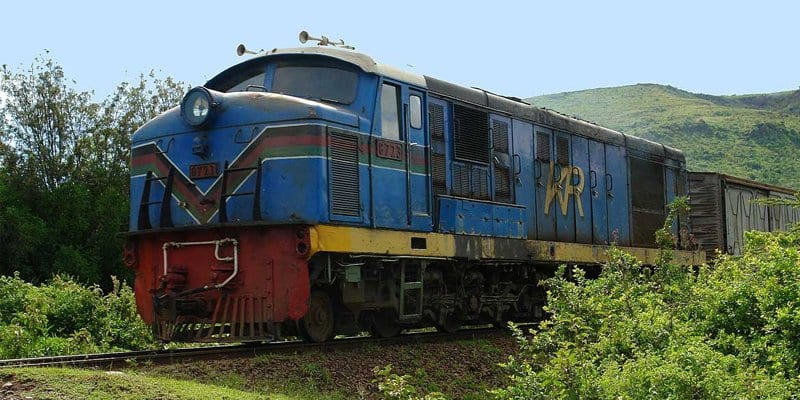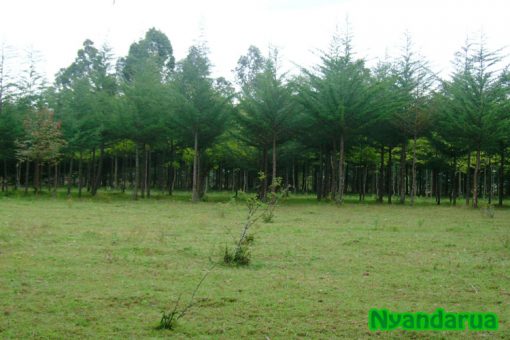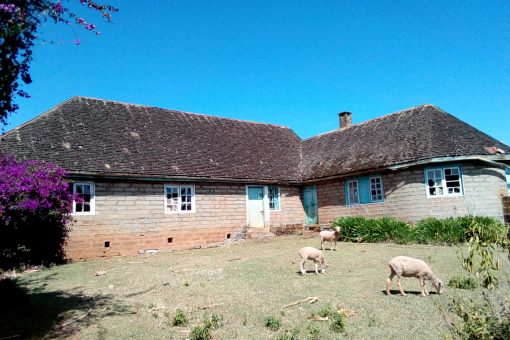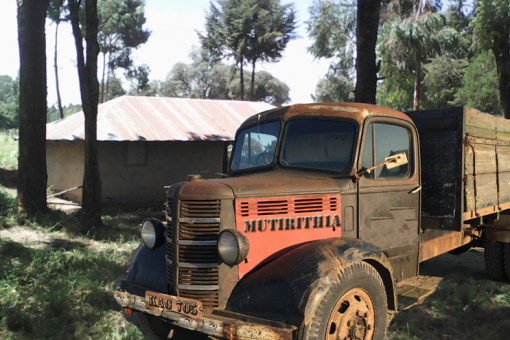One of my fondest childhood memories growing up in OlKalou was hearing the whistle of the train twice a day, every day. You could set your clocks on the train schedule, it was on time, every time. Our train came from Gilgil, stopping in OlKalou on its way to Nyahururu. It stopped at the OlKalou station 9 am sharp. It stopped for a while, then continued to Nyahururu. The train returned from Nyahururu at 3 pm sharp. It stopped in OlKalou for a while then continued to Gilgil.
The train whistle sounded deep into our Settlement Scheme. It was one of the prominent, consistent sounds of our childhood and we loved to hear it because we grew up with it. The whistle was an event marker for everybody, and it featured in daily conversations of both adults and children of OlKalou. “We spent the whole day at the Cereal Board meeting, we were there before the train” meaning before 9am, “and we were at the Catholic Church heading home when the train returned” meaning 3pm. Another adult would say “I was at Bhachu’s shop when the train passed, I knew I had to hurry home for the 5pm milking chores”. Students knew the school day was almost over when they heard the whistle of the afternoon train, “one more hour before we go home”. They knew the train passed at 3pm and school ended at 4 pm. When we left home in the morning for farm chores like chasing swarms of birds from the wheat fields, we received instructions from our mother as follows: She told us the work was to continue until we heard the afternoon whistle of the train, meaning 3pm, then we could go home. As spread out as we were over 20 something acres of wheat fields the whole day, the sound of the train whistle gathered all of us home in a matter of minutes, meaning we all heard the whistle. It was like an alarm that pierced the rural stillness, every day of our childhood, and we were glad to hear it.
My mother organized her afternoon tasks based on the train whistle. If we were working on the farm all day, the moment she heard the whistle, she declared, “Nigutukire, ni thaa kenda” translation: Its getting late, its already 3pm. That meant we started gathering ingredients for our evening meal, like harvesting collard greens (sukuma wiki) if we were eating ugali that evening, or picking peas and digging up potatoes if we were having stew. That is how dependable the train was and its whistle meant something to the residents of OlKalou.
The train was also a sight to behold for youngsters like us, who had barely traveled anywhere outside of OlKalou. There were very few automobiles on the road back then, so you can imagine the sight of a gigantic blue engine locomotive emerging from behind some trees, hauling numerous wagons (makumbi or bogi) behind it, the blast of its horn punctuating the OlKalou morning stillness, steel wheels grinding onto the railway tracks, creating a unique rhythmic sound – kokoro, kokoro, kokoro, that only a train could, as the red guard coach (ngati) marked the tail end of that fast moving iron marvel. It was mind boggling to us. If we happened to be going or coming from town, where we could see the train approach OlKalou in the morning or leaving in the afternoon, we stopped in our tracks to count the number of wagons it was hauling on that day. We stood there watching the train snake its way on the tracks until it was out of sight. It never stopped to mesmerize us as children.
Infact, there was a song our teachers at Munyeki taught us about the train, titled 500 miles. It went like this: “If you miss the train I’m on, you will know that I am gone, You can hear the whistle blow a hundred miles”. I always thought our teachers composed that song but later I learnt it was an international recording from 1962 by the group Peter Paul and Mary, you can You Tube it if you like. Anyhow, we found ourselves humming that song nostalgically as we watched our train come and go. That is how important the train was. Our teachers recognized its importance and we used the music they taught us to serenade our train.
Then there were days when we saw the lone small open trolley, the size of an SUV car, carrying a handful of men, with a red flag flying high above them. We called it Gateera. We had no idea who those men were or what they were doing on the railroad tracks. We had many theories of who they were and what they were doing, and what normally happened when they came face to face with the train. My brothers said the men usually pushed their trolley off the tracks to allow the train to pass. Is that even possible? Anyhow, we now know those were railway maintenance crews, sent out by the station master under whose jurisdiction they fell under. They are known as “gang” usually followed by a number, like “gang 7” signifying the stretch of tracks they are responsible for, while “gang 8” would be covering the next stretch of rail under a different station master. These gangs cover the railroad section by section, covering the entire railroad from one end to the other. The gangs ride the tracks on trolleys doing routine maintenance jobs and removing illegal objects from the tracks before the train comes through.
Call me sentimental, but the child in me still misses the train and its whistle. Whenever I go by the OlKalou Quarry, the spot where my brothers and I stood counting the train wagons, I always find myself stopping and looking at the tracks below, wishing the train could come back to OlKalou. But this time, I don’t wish for the train to come so that I can count its wagons, but I think of the economic impact it would have on our town and other towns along its path. I think of how locals could use it for transportation of goods as well as passenger services at a more affordable rate that the good old Kenya Railways is known for. I think of job opportunities a revitalized, modernized OlKalou station would create for our local youths.
Nyandarua leaders, OlKalou leaders and Kenya Railways – Is this a possibility? We are not asking for SGR services. Not at all. We are realistic in what we are asking for. Just one of those older engines that can haul reasonable wagons safely on the existing narrow gauge tracks is all we ask. Nothing fancy, just practical.
Think about this for a moment: If OlKalou was good for the train in the 1970s and 80s, when there was not much activity happening back then and no thriving businesses, and the population was nothing but a handful of busy, young, overwhelmed farmers; how about now, with all the strides we have made since those lean times. I believe there is a chance. Don’t you?




